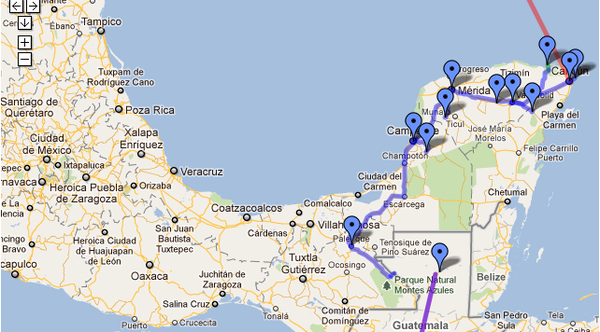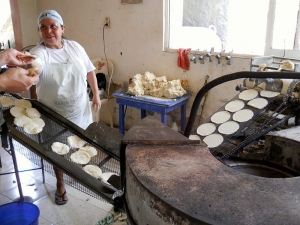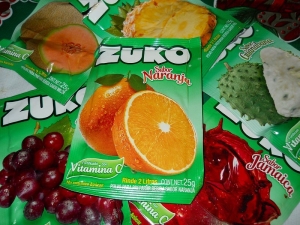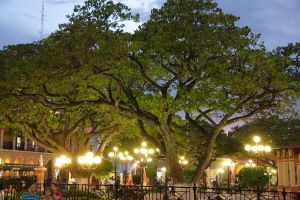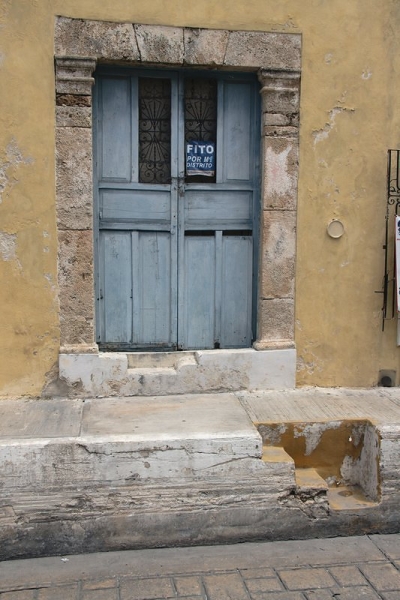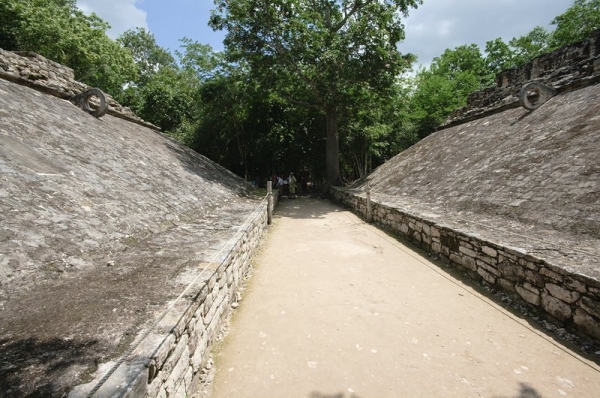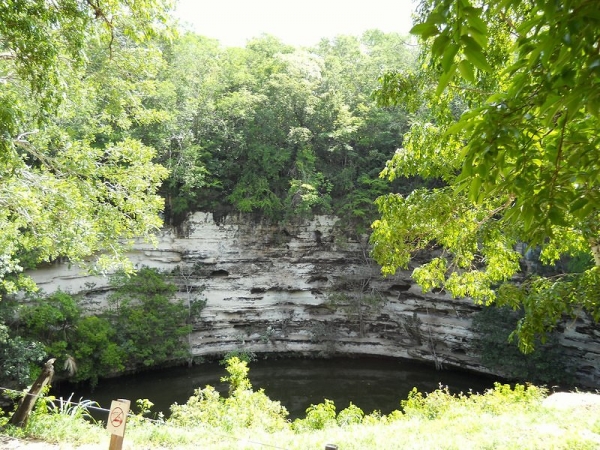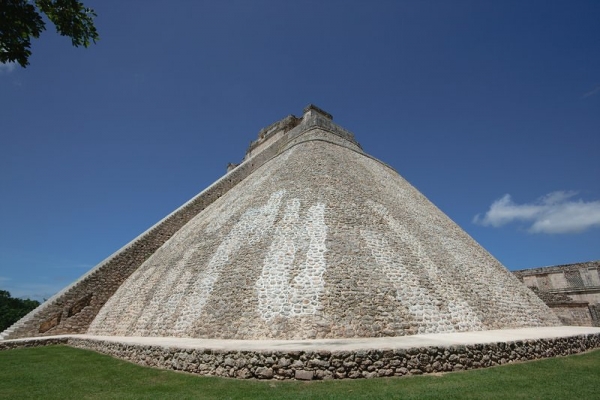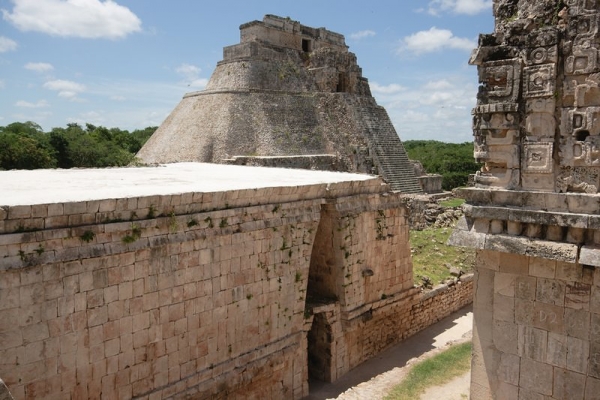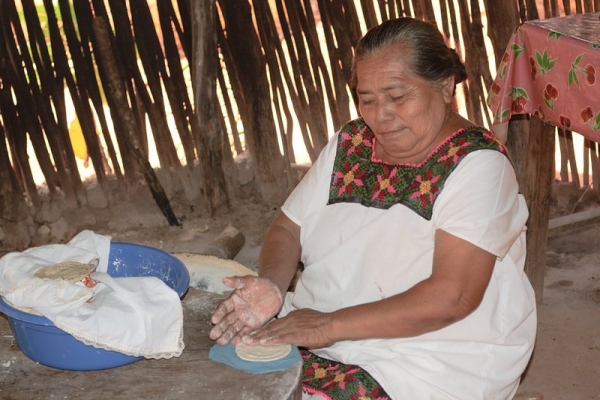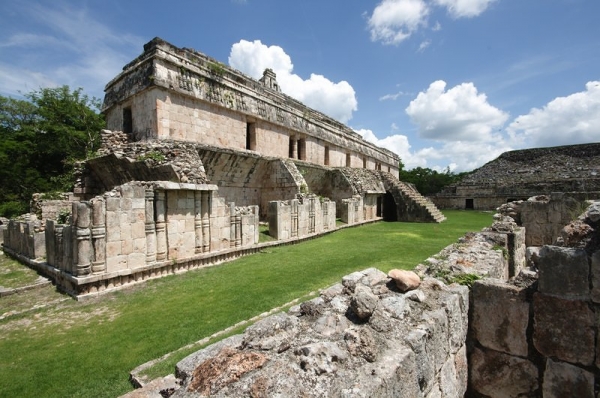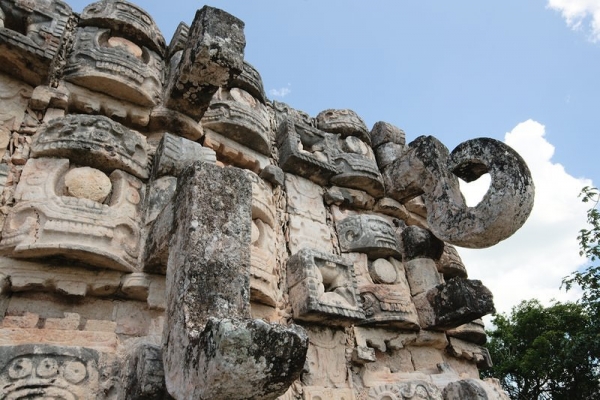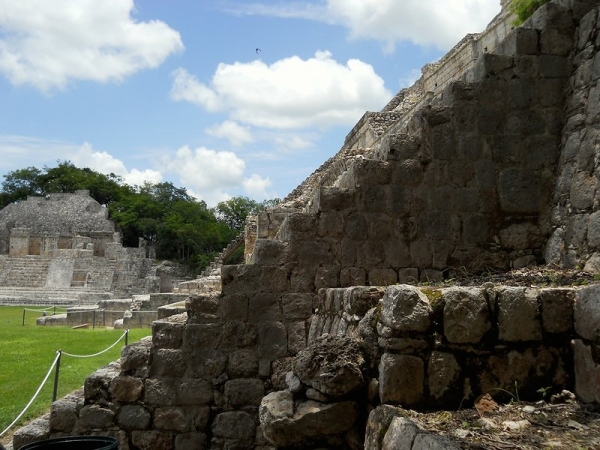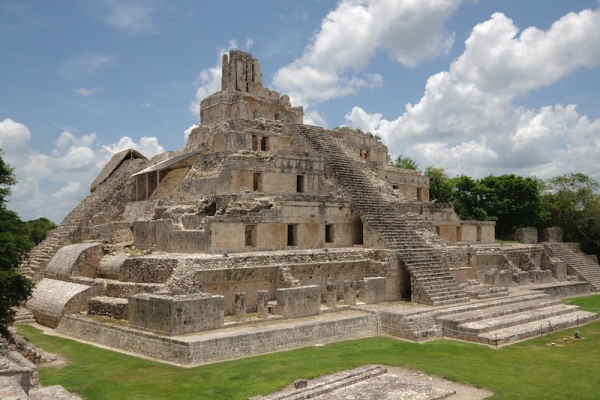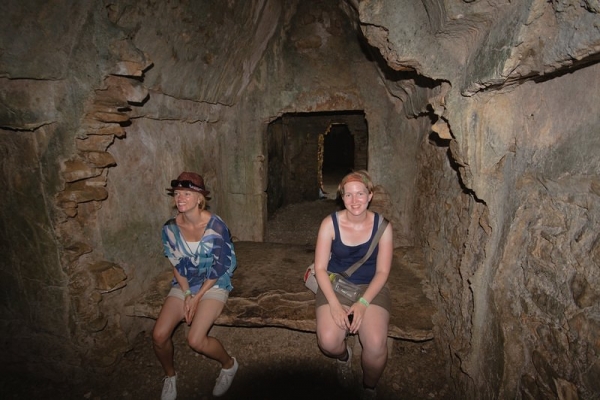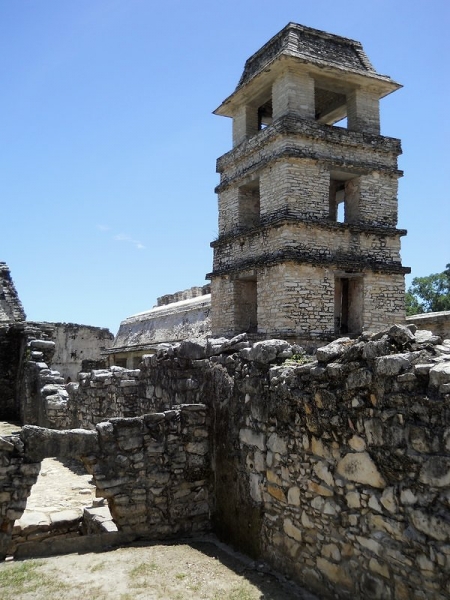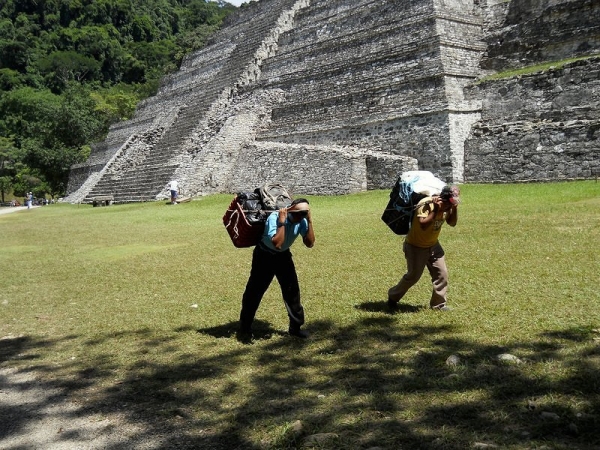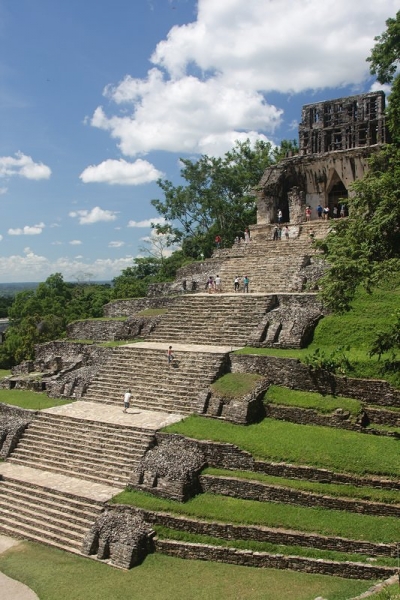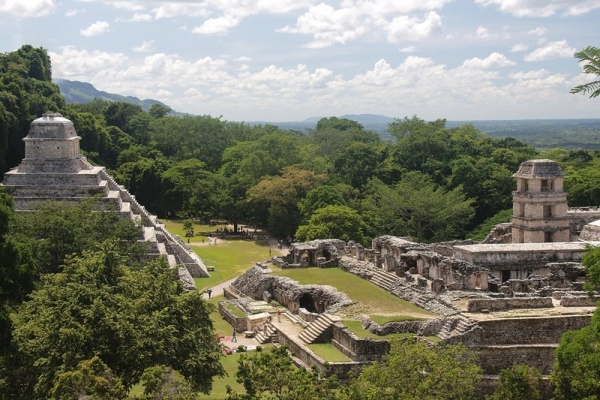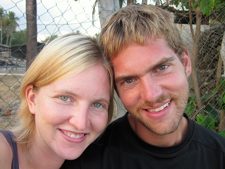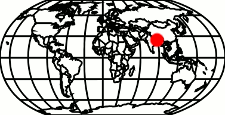As mentioned in my last post, Ashley and I have been spending a lot of time visiting Mayan Ruins and Museums. I wanted to write down some of the odds and ends that I’ve put together, partly so I don’t forget, and partly because I find it really interesting and don’t mind sharing.
Before I get too far, here’s my disclaimer. Everything I’m writing here could be (and probably is) entirely fiction. It’s mostly information I’ve put together myself after talking with tour guides, visiting a lot of ruins, and visiting several museums each having their own varying qualities of English translations. Please take everything here with a great big grain of salt.
Who Were the Mayans?
The Mayans are a distinct race insomuch as there are distinct races of human beings. As a race, they are characterized by their dark skin, their large noses, and short stature. I’ve also been told that their men do not grow facial hair.
As a people, they formed several distinct civilizations throughout history. The one responsible for the majority of the ruins we have to admire today began around 250AD and lasted for 650 years before a complete collapse around 900AD.
It’s important to note that very little documentation survives today that describes ancient Mayan society. The two biggest reasons for this are that the Mayans lost the ability to read and write their own language when their civilization collapsed, and that the Spanish, as much as possible, destroyed all writings and carvings that they could find during the time of the Conquistadors.
Beliefs
The Mayans believed that the gods created man from a mixture of their own blood and corn. They believed that the reason they were created was to worship and honour their creators. Thus was the purpose of man.
Sacrifices were made of variously coloured liquids obtained from trees, of animals such as jaguars and in rare cases of men. Two notable cases where humans were sacrificed were the ball courts found at all sights we visited, and the cenote (sink hole) at Chichen Itza.
Coba Ball Court
Little is known about the ball game played by the Mayans. It’s generally understood that the game was played with a heavy rubber ball, and that the players were only allowed to touch the ball with their hips and elbows. The goal of the game was to pass the rubber ball through one of the two hoops on the walls of the court. It is believed that the game was not a game at all, but more of a religious ritual. At the end of the ball game a sacrifice was made, though it is not known if the sacrifice was someone’s life, or only a small mutilation such as a pierced tongue or scarification. It’s also not know if the subject of the sacrifice was a player for the winning team, the losing team, or if they were even players in the ball game.
As for the cenote at Chichen Itza, the Mayans believed that cenotes were a gateway to the underworld where there resided many important gods, such as the rain god. At times, human sacrifices would be made to the rain god by throwing children and men into the cenote. When the cenote at Chichen Itza was excavated, hundreds of human remains were uncovered.
Cenote at Chichen Itza
The Mayans worshipped many gods, each reigning over their own dominion. One interesting aspect of these gods was their ability to be combined and broken apart many times. Thus when all the gods were combined, the Mayans worshipped a single all powerful being. But, when they were broken apart, they worshipped a wind god, a rain god, a blister god (yes a god of blisters) and many more. Each of these specific gods were aspects of the one god yet individual in their own right.
Unfortunately for the Mayans, the makeup of the gods most commonly worshipped were confused by the Spanish to be Christian devils and demons. For example, the Mayans believed in one all powerful god, divided into 3 main gods of the heavens. This paralleled the Christian belief of a single God who can be expressed as the father, son, and the holy spirit. So in the eyes of the Spanish, the Mayans knew about the Christian god. Here’s the catch, the Mayans also believed in an underworld with 13 gods that were popular to worship. For the Spanish 13 was an evil number and they called gods of the underworld demons. Thus, the Mayans were branded as demon worshippers by the Spanish and every effort was made to destroy all of their temples and writings. There’s no doubt that this contributed to the poor treatment the Mayans received from the Spanish.
Corn
So man is one part blood of the gods and one part corn. Why corn? Corn was probably the most important factor in allowing the Mayan civilization to come into existence. By farming corn, the Mayan people were able to spend less time in the pursuit of food than would otherwise be required without the aid of agriculture. This free time allowed them their civilized pursuits of trade, war, worship, science, and temple building. Without corn, we wouldn’t have called the Mayans civilized, and they themselves were well aware of their reliance on corn.
Science
The Mayans were very gifted in science. In mathematics, they were the first group on earth to discover the number zero. In astronomy, they were able to accurately track the movement of the Earth and several planets around the Sun. This allowed them to create an accurate calendar containing 365 days in a year. They were also gifted in engineering, as demonstrated by their great buildings, and hydraulic water systems. Some of their palaces had indoor toilets and running water, something many other civilizations had not yet developed.
Subjugation of the People
The ruling class of the Mayan civilization claimed to be direct descendents from the gods, and thus ordained to govern the affairs of men. They also claimed to be in communication with the gods. They claimed to convey the problems of the people to the gods and to determine for the people what appropriate sacrifices were required for the gods to be satisfied and ease their hardships. No doubt this was perceived as an essential service by the general populace.
To back up these claims, the royal family undertook several drastic steps. Here’s a few examples:
- They deformed their heads as children so that they would appear to more closely resemble an ear of corn. This would have set them apart as a visually distinctive race, and helped convince their subjects of their divine origins.
- They studied the calender and were able to determine when the rainy season would start each year. Keeping this information secret, they would hold rituals where they would spill their own royal blood in a public and gruesome way, claiming that their blood was payment to the gods for the rain needed to grow the corn. Within hours or days of this ritual, the rainy season would start thus proving their divinity once again.
- Using their knowledge of engineering and astronomy they caused their temples to be built in such a way that the sun would shine through small windows and give flashes of light or display symbolic shadows at important times of the year. The general populace would take these signs as acceptance from the gods for the sacrifices ordered by the royalty and would thus again be confused.
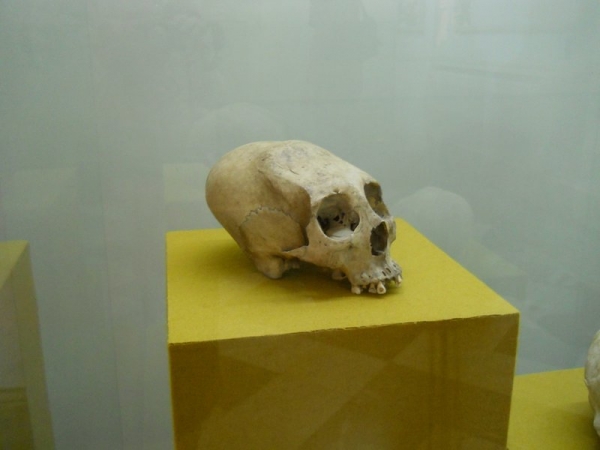
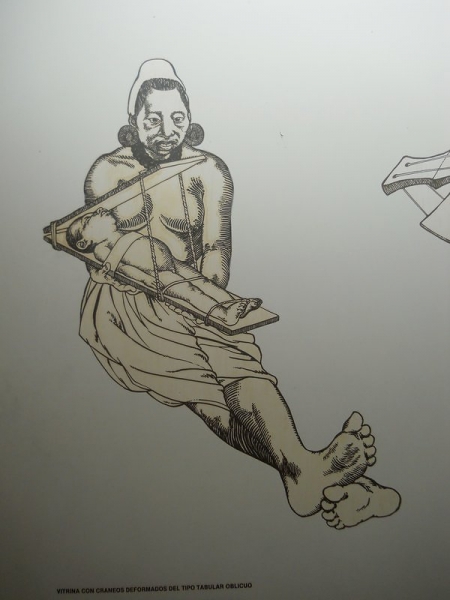
Elongating the skull to look a little more like corn
To keep up this trickery, only the royal family and their closest servants were allowed to study the arts of astronomy, and science. When a system of writing was developed, again, only a select few scribes living within the palace were taught how to read and write. In this way, the knowledge of astronomy and science could be passed down through the generations without the common people becoming aware of it’s existence and thus believing the above trickery to be divine.
One down side of this “keep it in the family” approach was the inability of the royal family to bring commoners into the family for fear of them revealing their secrets. For this reason, incest was quite common, resulting in many strange physical deformations in the ruling class. As they claimed to be of divine origin, these deformities were sold to the populace as proof of divine favour and the Mayans came to worship dwarfs, albinos, and those who possessed more than 10 fingers.
Temple Building
Having thus subjugated the general populace by feigning to be divine, the royal families ordered the construction of great palaces, tombs, temples, markets, and other buildings as they required. The commoners would not have lived in these buildings, but would have spent a great deal of their lives contributing to their construction.
Though there is evidence that the Mayans kept slaves, these great constructions would have been gladly built by commoners without the need for mass enslavement. It was likely considered a great honour to be able to devote one’s life to the glorification of the gods, and the royalty would have had little trouble in convincing the number of people required for construction to work long days with minimal reward.
Previous to my visits to these Mayan ruins, I had imagined that the Mayans lived in harmony with nature, living among the animals and trees of the jungles. The reality is that this was not at all true. In constructing their great buildings, it was necessary to cut and burn the trees of the jungle to supply mortar and plaster. This was prepared by burning limestone and combining the result with wood-ash and water. It is said that when the Mayan cities were in their peak, they would have been cleared of trees as far as could be seen. In their place would be great buildings, humble dwellings, and vast corn fields.
Trade
The Mayans had developed a trade network that reached far north into today’s USA and far south. Between their own cities, trade was done on a large scale and was very important. The royal families established their cities for specialized purposes, for example one city may have been established for corn production while another existed to worship the fertility god or to study astronomy. The fruits of each city’s labour were then exchanged between them.
To facilitate this trade, raised roads were constructed stretching up to 100km through the jungle. The roads were raised 3-4 feet above the grade and were roughly 10 feet wide. The tops were covered in a smooth white plaster (which today is quite slippery when wet as we discovered). It’s not known why the roads were built in such dimensions as the Mayans never made use of beasts of burden nor wheeled carts.
War and Slavery
As with any other great civilization occasions of tension would arise between various cities as a result of unfair trade. The royal families would also, at times, seek to extend their sphere of control or to elevate their position against their brothers and sisters. This led to campaigns of war. Little is known about the extent of the wars, but there is evidence that cities would be occupied by forces from other cities for years at a time, the victors of these wars would carry off slaves, and the royalty would be disposed or enslaved.
Decline
This is probably the most interesting aspect of the Mayan civilization. For one reason or another, the whole of the Mayan civilization ceased to exist around 900AD. Although the cities themselves were abandoned en masse the Mayan people themselves never disappeared and still survive today along with their spoken language.
My best guess as to why is that a large portion of the region inhabited by the Mayans underwent a period of drought. The result of which would have been catastrophic to the rulers. The populace must have discovered them to be the frauds that they were, when they were unable to produce the necessary rain, or would have considered the ruling class to have done something to offend the gods and thought the solution was to rise up against them.
Other suggestions have been put forward to me, including mass disease, a poisoned drinking water supply (from dumping sacrifices into it for hundreds of years), and overpopulation (Tikal had around 200,000 residents in it’s peak, other cities around 50,000.) This would have had a great demand on food and drinking water). The reality is, nobody really knows why the Mayan civilization ceased to exist so abruptly.


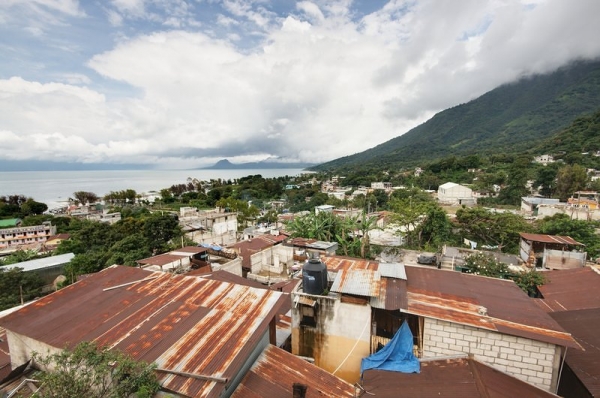
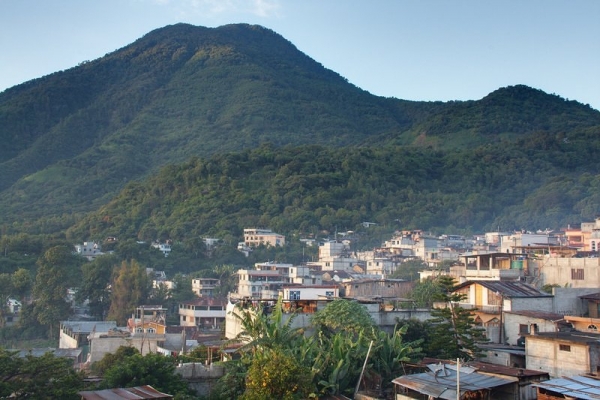
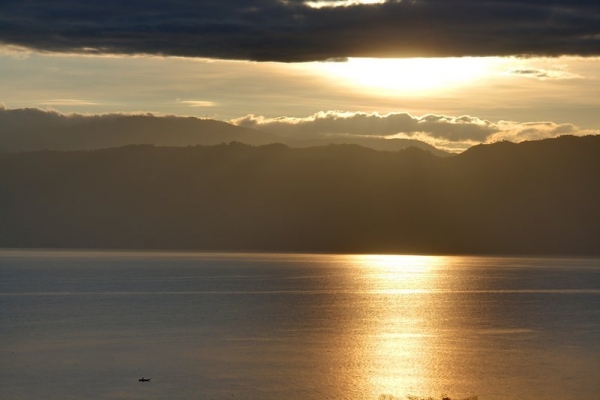
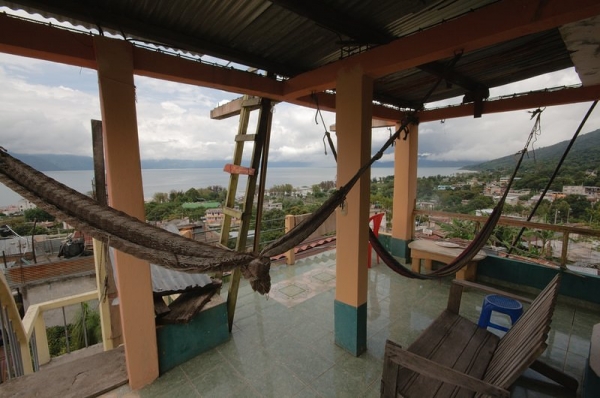
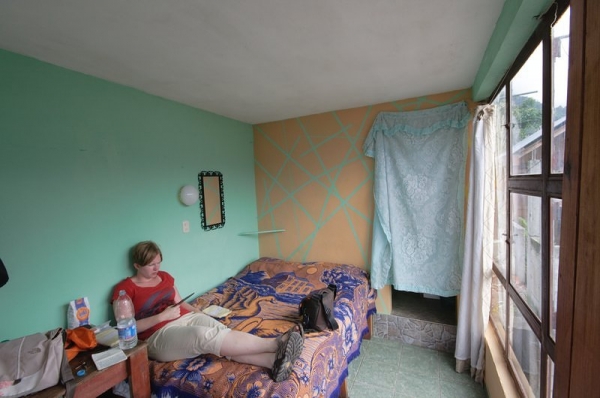
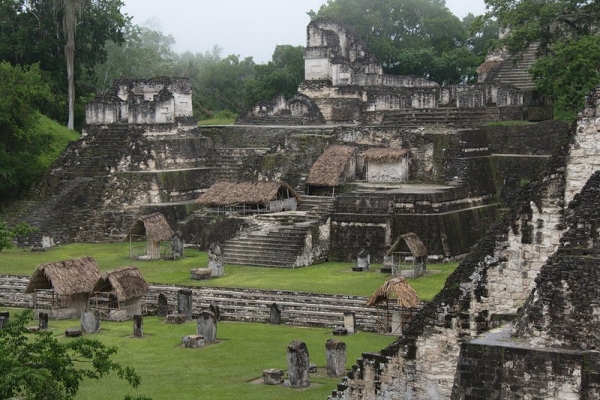
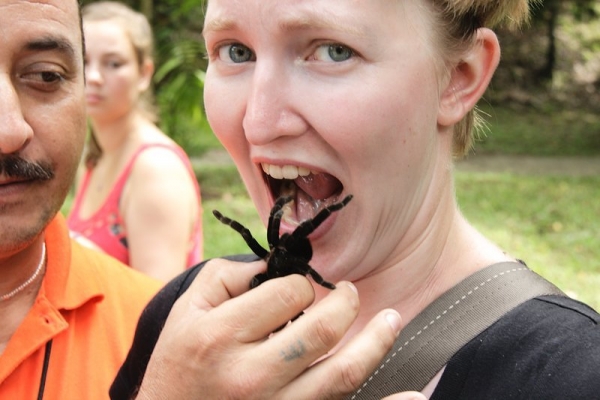
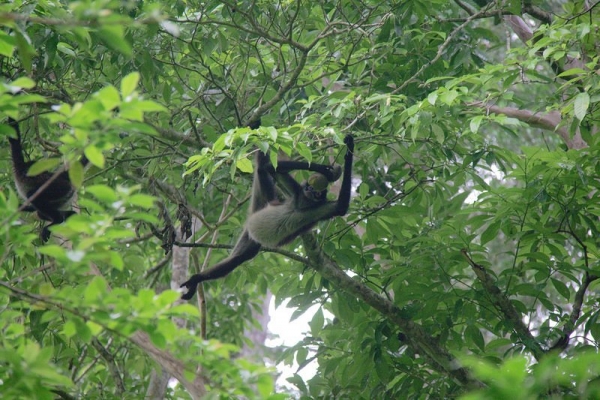
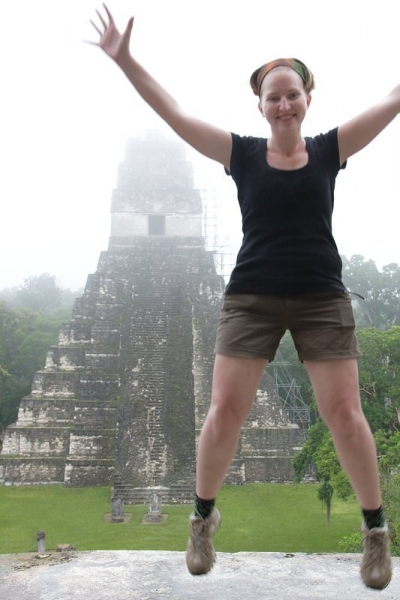
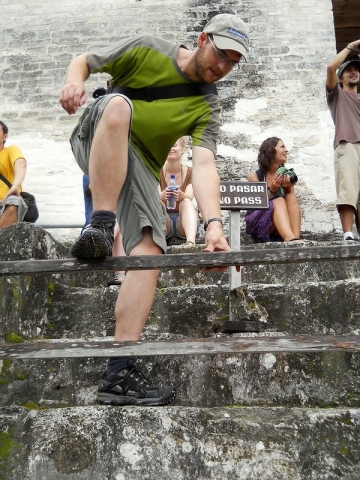
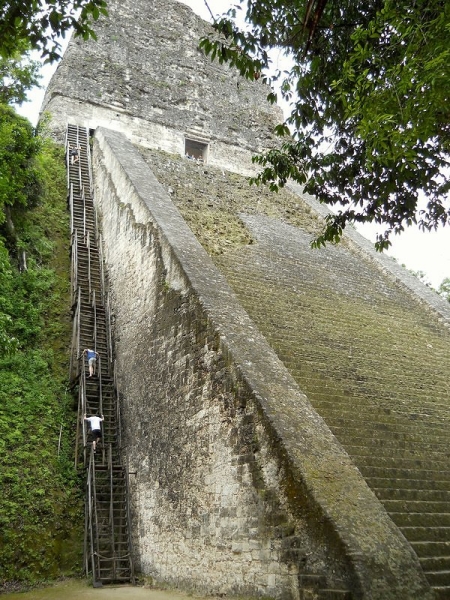
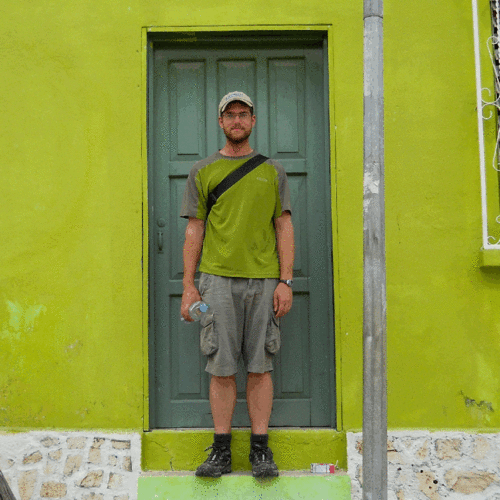
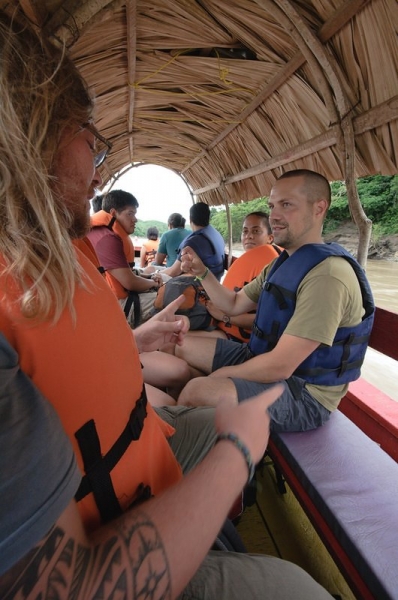
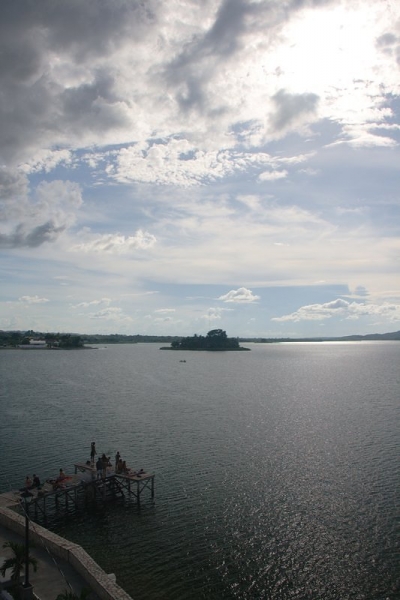
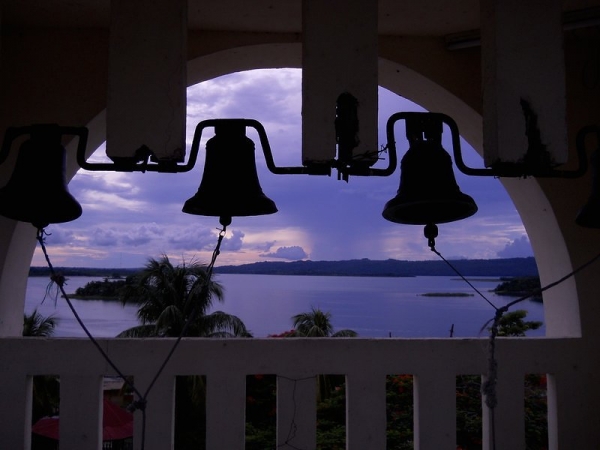
 1. “…exciting!” – Most people seem genuinely happy and excited for us when we tell them about our trip plans. They wish us well and that’s that.
1. “…exciting!” – Most people seem genuinely happy and excited for us when we tell them about our trip plans. They wish us well and that’s that. Where are we starting? What’s our itinerary? Why don’t we have a solid itinerary? How long will we be gone for? Will we come back at all? And so on, and so on. We may not always have the answers, but since travelling is pretty much all that we think about lately, neither of us mind going on and on about the trip.
Where are we starting? What’s our itinerary? Why don’t we have a solid itinerary? How long will we be gone for? Will we come back at all? And so on, and so on. We may not always have the answers, but since travelling is pretty much all that we think about lately, neither of us mind going on and on about the trip. also seem content to live vicariously through our travels (or at least, so they say). I’m actually surprised by how many people I meet that have done one-year stints in various countries, and yet don’t consider themselves to have traveled much. Personally, I think spending a year working in a single foreign country is still traveling – it’s just slow traveling… the best kind!
also seem content to live vicariously through our travels (or at least, so they say). I’m actually surprised by how many people I meet that have done one-year stints in various countries, and yet don’t consider themselves to have traveled much. Personally, I think spending a year working in a single foreign country is still traveling – it’s just slow traveling… the best kind! 4. “… just like my friend/cousin/niece/nephew/daughter/son” – Everyone we talk to knows someone that is currently traveling or has recently traveled for at least a year. Like #3, most of these travelers have spent a year or more working in a foreign country. The biggest theme among these travelers? They all seem to be 18 – 24 years old… which kind of makes me feel old. Better late than never, I guess!
4. “… just like my friend/cousin/niece/nephew/daughter/son” – Everyone we talk to knows someone that is currently traveling or has recently traveled for at least a year. Like #3, most of these travelers have spent a year or more working in a foreign country. The biggest theme among these travelers? They all seem to be 18 – 24 years old… which kind of makes me feel old. Better late than never, I guess! 5. “… scary!” – The prevalence of this reaction kind of took me by surprise. I had no idea there was so much fear of new places out there. A lot of people view travel as a series of beach resorts and have a genuine fear of what’s beyond the tourist path. Whether it’s the latest violence in Mexico to hit the headlines or a story about friends that traveled to Colombia a decade ago and found it too dangerous, there’s no shortage of fear out there. And we hear all about it. Now, don’t get me wrong, I understand that there are a lot of scary places out there. But some of them are in my own neighbourhood… there are areas of Regina that I wouldn’t walk through alone at night, and I’m sure there will be areas of cities or entire regions that it won’t be safe to travel through. I’m not going to be stupid, but I’m not going to let fear unnecessarily limit my trip either.
5. “… scary!” – The prevalence of this reaction kind of took me by surprise. I had no idea there was so much fear of new places out there. A lot of people view travel as a series of beach resorts and have a genuine fear of what’s beyond the tourist path. Whether it’s the latest violence in Mexico to hit the headlines or a story about friends that traveled to Colombia a decade ago and found it too dangerous, there’s no shortage of fear out there. And we hear all about it. Now, don’t get me wrong, I understand that there are a lot of scary places out there. But some of them are in my own neighbourhood… there are areas of Regina that I wouldn’t walk through alone at night, and I’m sure there will be areas of cities or entire regions that it won’t be safe to travel through. I’m not going to be stupid, but I’m not going to let fear unnecessarily limit my trip either. 6. “…crazy!” – Sometimes people flat out tell us we’re nuts and other times they express it with more subtlety. Some of the people we know can’t get over the fact that we left our debt-free lives, sold our house and belongings, left our stable careers with pensions, and are traveling this young. Others think we should be committed for wanting to spend a year or more living out of a backpack and staying in hostels. Regardless of how “crazy” it might seem for others, this is the right time for Mike and I to travel so we have no regrets.
6. “…crazy!” – Sometimes people flat out tell us we’re nuts and other times they express it with more subtlety. Some of the people we know can’t get over the fact that we left our debt-free lives, sold our house and belongings, left our stable careers with pensions, and are traveling this young. Others think we should be committed for wanting to spend a year or more living out of a backpack and staying in hostels. Regardless of how “crazy” it might seem for others, this is the right time for Mike and I to travel so we have no regrets. 7. “… great for your guys.” Hmmm… I could probably use a
7. “… great for your guys.” Hmmm… I could probably use a  8. “… sad : ( ” This response often comes after the others and, to be fair, was quite expected. I’d be a little concerned if no one I knew felt a little bit of sadness about my departure for an undetermined length of time.
8. “… sad : ( ” This response often comes after the others and, to be fair, was quite expected. I’d be a little concerned if no one I knew felt a little bit of sadness about my departure for an undetermined length of time. Whether or not they agree with us and our reasons, our friends and family are incredibly supportive of our plans (or lack thereof). I truly feel loved and know I have a great group of people to return to.
Whether or not they agree with us and our reasons, our friends and family are incredibly supportive of our plans (or lack thereof). I truly feel loved and know I have a great group of people to return to.